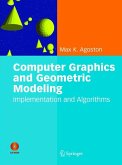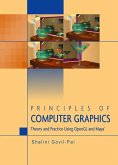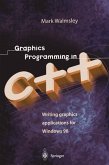Mathematical and Computer Programming Techniques for Computer Graphics introduces the mathematics and related computer programming techniques used in Computer Graphics. Starting with the underlying mathematical ideas, it gradually leads the reader to a sufficient understanding of the detail to be able to implement libraries and programs for 2D and 3D graphics. Using lots of code examples, the reader is encouraged to explore and experiment with data and computer programs (in the C programming language) and to master the related mathematical techniques.
A simple but effective set of routines are included, organised as a library, covering both 2D and 3D graphics - taking a parallel approach to mathematical theory, and showing the reader how to incorporate it into example programs. This approach both demystifies the mathematics and demonstrates its relevance to 2D and 3D computer graphics.
A simple but effective set of routines are included, organised as a library, covering both 2D and 3D graphics - taking a parallel approach to mathematical theory, and showing the reader how to incorporate it into example programs. This approach both demystifies the mathematics and demonstrates its relevance to 2D and 3D computer graphics.
From the reviews: "This book introduces the mathematics and related computer programming techniques used in computer graphics. ... Using lots of code examples, the reader is encouraged to explore and experiment with data and computer programs and to master the related mathematical techniques. ... This parallel approach of exposing the students to the mathematical theory and showing them how to incorporate it into example programs is the major strength of this book. This approach both demystifies the mathematics and demonstrates its relevance to 2D and 3D computer graphics." (Sonia Pérez Díaz, Zentralblatt MATH, Vol. 1090 (16), 2006)








